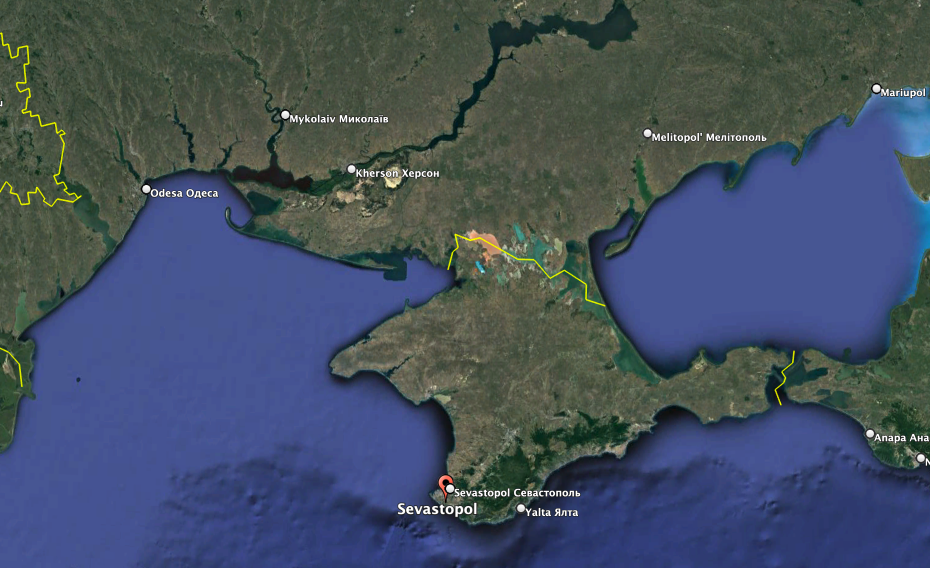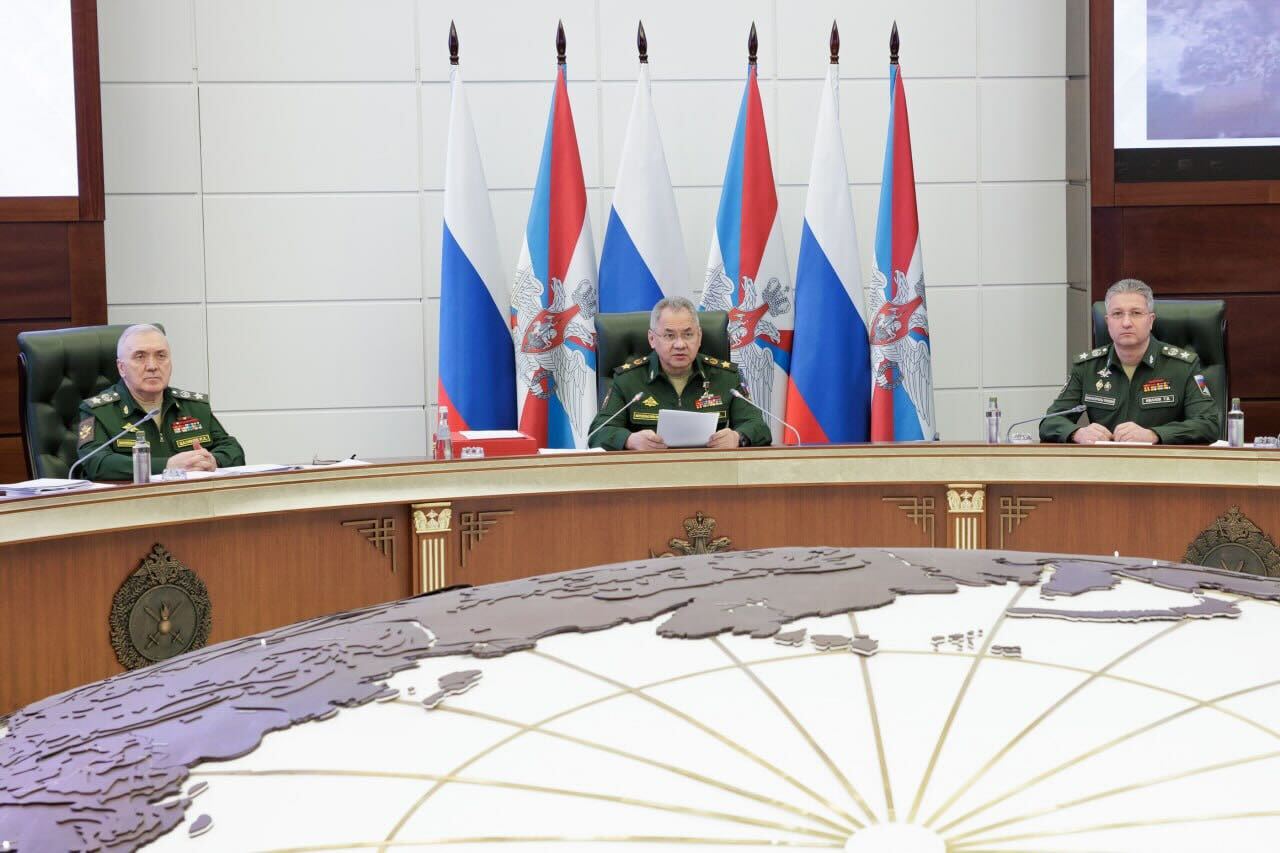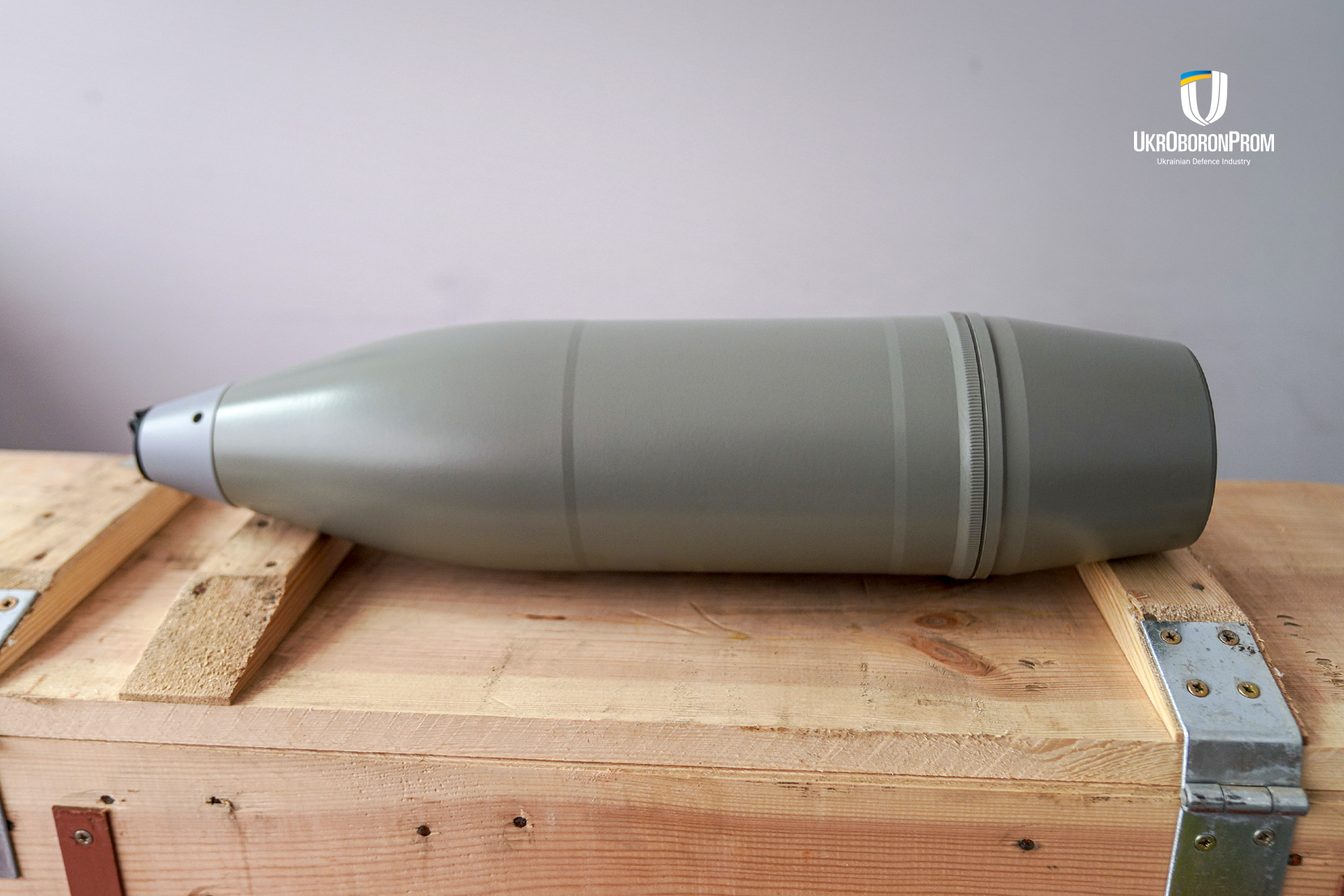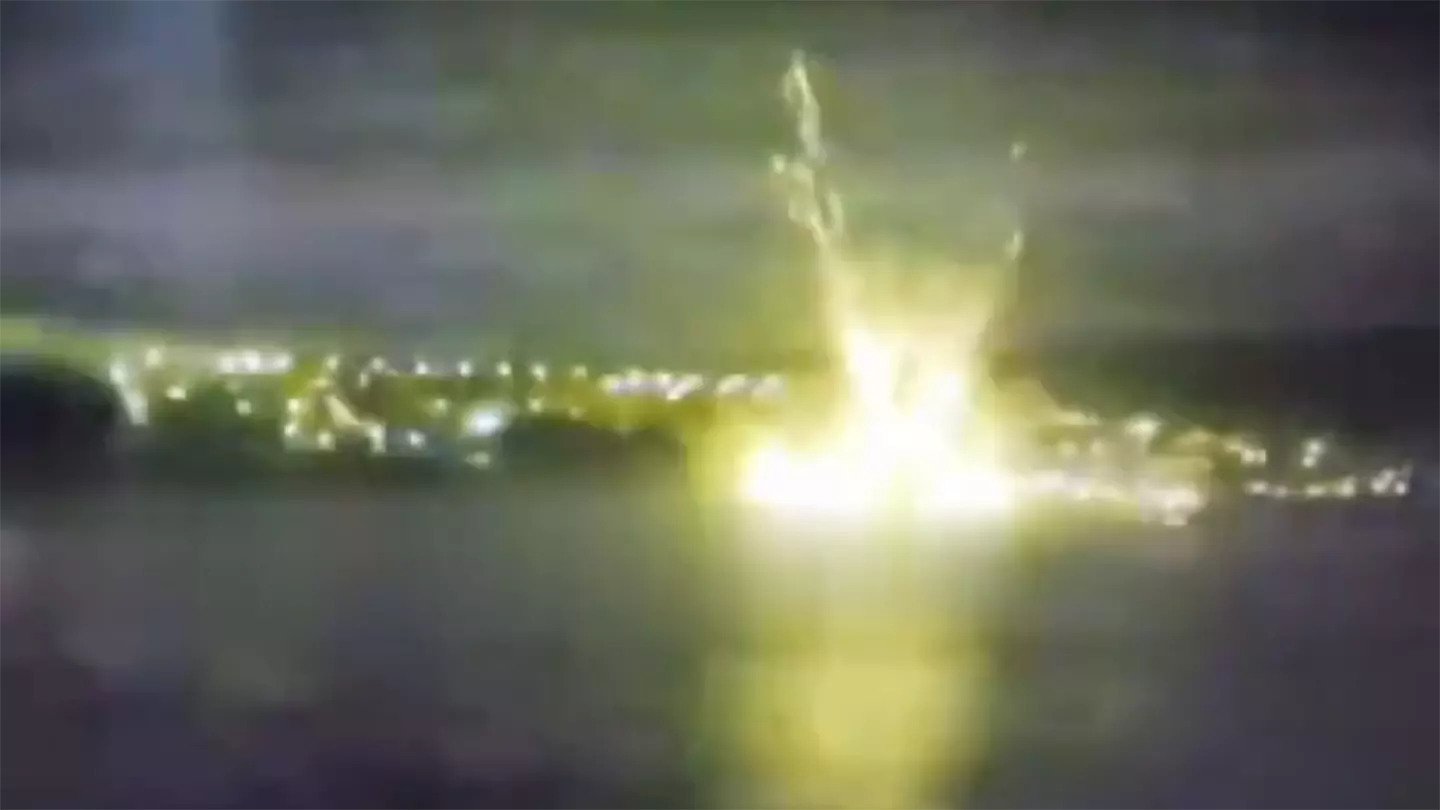Though it’s about 140 miles from the front lines, the city of Sevastopol on the Russian-occupied Crimean peninsula came under another Ukrainian uncrewed surface vessel (USV) and aerial drone attack Wednesday, according to Russian government officials and media and a Ukrainian Telegram channel.
Video emerging on social media showed a large explosion, what appeared to be an object near the entrance to the harbor — possibly a USV — and the response of Russian air defenses to the aerial drones.
The video above shows what appears to be Russian defenses shooting into the sky and at the water’s surface. A tracer round can be seen fired toward the surface at the 15-second mark. A second later, it appears to ricochet at a steep angle and then strike something, likely an object on shore or a ship, that results in a large explosion. We have to stress that this is what the video appears to show. Its low quality and the low-light setting could hide other details that could make the ricochet then explosion a coincidence, with the blast brought on by a form of attack or by successfully engaging an explosive-laden drone boat.
There were videos showing other angles of the incident posted on social media as well.
While it is unclear what damage was caused in this latest attack, it is likely to further increase tension on the peninsula, which has been occupied by Russia since 2014 and targeted for liberation by Ukrainian officials. According to one Russian media outlet, maritime transportation around Sevastopol was stopped as a result of the attack.
“In the early morning, our fleet repelled an attack by surface drones,” Mikhail Razvozhayev, the Crimean occupation governor, reported Wednesday on his Telegram channel.
“In total, three objects have been destroyed,” he wrote. “They tried to penetrate the bay, our sailors fired at them from small arms. Also worked our air defense on an air target.”
“The warships were not damaged,” Razvozhayev wrote. However, he said the exploding USVs damaged windows in a building but added that no one was hurt.
“Our military confidently and calmly repulsed the attack of enemy drones on Sevastopol,” Razvozhayev wrote. “The situation is under control. All operational services at the ready. Trust only official information.”
“According to eyewitnesses, fire is visible in the sea bay of Sevastopol,” the Russian Baza news agency reported on its Telegram channel Wednesday. “Apparently, it’s a marine drone on fire. The movement of maritime transport has been stopped in the city.”
Two Russian sailors were honored by Russian Defense Minister Sergei Shoigu for firing at the aerial drones attacking Sevastopol today.
“’From 4:00 am to 5:56 am today, there was an attempt to hit Russian facilities in Sevastopol by drones,” Shoigu said Wednesday in Moscow at a Defense Ministry Board Session.
“All three aerial vehicles have been neutralized. I would like to draw your attention to the fact that two aerial vehicles were shot down by Senior Sailor Marina A. Faleeva and Chief Starshina Tatyana V. Tseluiko. I would like to give instructions to present the women with awards and, in accordance with our decisions, to give money reward for destroying enemy vehicles.”

The Ukrainian Crimean Wind Telegram channel offered a timeline of the incident that roughly coincided with the Russian Defense Ministry version but with more details:
- The first explosion was heard at about 4:30 and was not very loud.
- At 4:46 a strong roar was heard in the central region of Sevastopol. From the shock wave in the apartments, windows and doors trembled, cars howled. At the same time, Sevastopol residents note that at the moment they do not see any smoke, they do not hear any sirens of special vehicles.
- Three such explosions were heard with an interval of 10-15 minutes.
- 5:44 – A new explosion sound is reported.
- 5:53 – Sevastopol residents say that automatic bursts are heard in the city. It is believed that there is shooting at the UAV.
- 6:00 – Shots and roar are still regularly heard in the sea bay. Sevastopol residents report that ships of the Black Sea Fleet are operating in the waters.
- Smoke is nowhere to be seen above the city.
- 6:13 – The city is noisy again. It is reported about the active work of air defense.
Wednesday’s attack on Sevastopol was just the latest in a long series of Ukrainian strikes on the peninsula. On Monday, Ukraine’s Defense Intelligence Directorate (GUR) claimed that an attack on the city of Dzhankoy in the northern Crimean peninsula destroyed Kalibr missiles.
That claim is still unconfirmed, though Russian officials did acknowledge that the town, home to an airbase as well as a key rail junction, had been the subject of an unsuccessful attack.
And this is the second USV and aerial drone combined attack on Sevastopol in six months. The city was hit by a similar large-scale attack in October. You can read more about that operation here.
Russian media outlets also claimed there was a Ukrainian ‘kamikaze’ drone attack on Sheskharis Harbor in Russia’s Black Sea port of Novorossiysk in November. This was supported by video evidence.
We got our best look yet at Ukraine’s USVs, which first emerged last fall, back in November, thanks to an official crowdfunding campaign.
It has been widely posited that Ukraine’s USVs were controlled beyond line-of-sight via the SpaceX Starlink system, but company owner Elon Musk – apparently worried about the “escalatory effect” of Kyiv’s USV attacks – has now opted to limit how Starlink works, according to The Economist.
“Starlink now uses geofencing to block the use of its terminals—not only above Russian-occupied territory inside Ukraine, but also, according to a Ukrainian military intelligence source, over water and when the receiver is moving at speeds above 100km per hour,” the publication reported. “You put it on a boat at sea and it will simply stop working,” that source said.
There are other ways to potentially employ these drones, including having them autonomously navigate to their target area and then remotely controlling them within line-of-sight by an individual in the target’s vicinity, that you can read more about in our deep dive on the first Sevastopol attack here.
Regardless of the success of these attacks, they are “a demonstration of how Ukraine can start making Crimea untenable…the precursor to liberating it from Russia,” Ben Hodges, a retired Army lieutenant general who commanded U.S. Army Europe, told The War Zone.

“I can only assume that they are doing this to disrupt or damage Russian capabilities, eg destroying missiles on a train or truck, to test their own drone and long-range strike capabilities ahead of the coming offensive, to seize the initiative and get the Russians on the back foot, and perhaps to demonstrate to the White House that this is a feasible concept,” Hodges said. “And of course a big psychological effect – positive for Ukrainian citizens who are getting hit every day in their homes and negative and worrying for the Russians.”
At nearly 17,000 square miles in size, “Crimea is almost exactly the same size as Massachusetts,” Hodges noted. “There is nowhere to hide on Crimea. All the key military sites and facilities are well-known to the Ukrainian General Staff. They just need the capabilities to strike these sites with precision. That’s how they make Crimea untenable for the Russian Black Sea Fleet (Sevastopol), the Russian Air Force (Saki), Russian missile and drone launchers, and Russian logistics and airfield (Dzankoy).”
Before we head into the latest news from Ukraine, The War Zone readers can get caught up on our previous rolling coverage here.
The Latest
Russia hit Ukraine with more deadly drone and missile attacks Wednesday near Kyiv and in Zaporizhzhia, Ukrainian officials say.
There were seven people killed and nine injured in a drone attack on two dormitories and an educational facility in Rzhyshchiv, 40 miles south of Kyiv, regional police chief Andrii Nebytov said on his Telegram channel Wednesday.
One child is among the injured, Nebytov wrote, adding that there were also a dozen drones shot down.
In Zaporizhzhia, at least one person was killed and 25 injured, including two children, in a direct missile strike on a high-rise building, Zaporizhzhia City Council Secretary Anatolii Kurtiev said on his Telegram channel.
“We will certainly respond to the occupier for every attack on our cities,” Ukrainian President Volodymyr Zelensky said on his Telegram channel Wednesday. “Today’s Russian strikes on Zaporizhzhia, the night attack on the Kyiv region…all Russian strikes will receive a military, political and legal response. Russia will lose this war. There is no subject in the world who does not feel this already. Everyone already understands that. And every Russian murderer should understand: an arrest warrant is the best thing that can happen to him.”
Speaking of Zelensky, he visited troops and handed out medals in Donetsk Oblast, near the besieged coal-mining city of Bakhmut.
“I am honored to be here today to award our heroes,” Zelensky said on his Telegram channel. “To shake hands and thank them for protecting the sovereignty of our country. Glory to each and every one who is now fighting for Ukraine! May the memory of all those who sacrificed their lives for our independence be blessed!”
Russian leaders too handed out medals.
In Moscow, Russian Defense Minister Sergei Shoigu awarded the pilot of a Su-27 Flanker jet responsible for colliding with a U.S. Air Force MQ-9 Reaper drone over the Black Sea on March 14.
The White House National Security Council spokesman John Kirby was less than impressed that the Russian pilot was honored.
“I don’t know of another military in the world air force in the world that would award a pilot for smashing into a drone,” Kirby told reporters Wednesday afternoon. “If that’s bravery then I guess they got a different definition of it.”
“It’s ludicrous,” said Kirby. “It’s insulting. We don’t know whether that pilot was trying to intentionally ram that drone or not, but he did. The video evidence was pretty conclusive. Either way. I mean, in the Navy I grew up in, you don’t want to hit anything.”
“I mean, I’m sorry, I have to throw the flag on this one. I have no clue why they would give a bravery award to a pilot who was at worst, was maliciously putting himself and U.S. property at great risk. And at best, just an idiot.”
While the U.S. is still flying over the Black Sea, those flights are further south than they were before the Reaper was shot down, according to CNN.
“The drone flights have remained in international airspace, but since the collision between one of the Russian jets and the MQ-9 Reaper drone last Tuesday, the US has moved its drone flights farther away from airspace surrounding the Crimean peninsula and eastern portions of the Black Sea,” CNN reported.
And speaking of Shoigu, the Russian Defense Minister said most of his aviation forces have experienced combat since the launch of the all-out invasion last year.
“During the special military operation, up to 90% of the crews of Operational-Tactical and Army aviation, 60% of strategic and long-range aviation, and 85% of unmanned aerial vehicle systems personnel have gained combat experience,” he said during introductory comments at the Defence Ministry Board Session in Moscow Wednesday.
“More than 140,000 combat sorties have been made during the operation,” said Shoigu. “In total, the Aerospace Forces have destroyed more than 20,000 enemy targets.”
We reached out to Ukrainian Air Force Col. Yuri Ignat for comment and will update this story with any information he provides.

In response to yesterday’s news that the U.K. was going to supply Ukraine with depleted uranium rounds for the Challenger 2 tanks it provided Kyiv, Shoigu warned that they “will have a serious negative effect on the health of servicemen who use them,” according to the official Russian TASS news agency.
During an interview with Russia’s Rossiya-1 TV, released via Telegram by journalist Pavel Zarubin, Shoigu said NATO had already used such munitions “during the [1999] events in Kosovo, Serbia,” according to TASS. “A subsequent investigation into their use revealed that the health of servicemen, who used them, was seriously harmed.”
“There were consequences. There were consequences for the health of those who used those munitions. There were serious health conditions, and they were studied. However, they did not examine what kind of effect the munitions had on those against whom they were used,” Shoigu added.
However, that claim has been previously debunked by NATO.
“To date, the scientific and medical research continues to disprove any link between Depleted Uranium and the reported negative health effects,” NATO reported in 2005. “Furthermore, the present evidence strongly suggests that NATO troops serving in the Balkans are not suffering negative health effects different from those suffered by their colleagues who have not served in the Balkans. Nevertheless, NATO is not complacent about this matter, and will continue to share information about this issue.”
As it continues to lose armor, Russia appears to be taking ancient T-54/55 tanks, the first prototype of which was completed in 1945, out of mothballs.
It’s unclear whether they may ever see combat in Ukraine, but examples do at least appear to be being brought back into service in some capacity. You can read more about that in our coverage here.

Ukraine’s state defense firm Ukroboronprom, in cooperation with an unspecified NATO country, has set up production of 122mm artillery shells abroad “and has already managed to ship those shells to the Armed Forces of Ukraine,” the company said Wednesday on its Facebook page. “This is the third type of ammunition after the 120mm mortar [shells] and 125mm tank shells, which is manufactured using Ukrainian technology and with the involvement of Ukrainian…specialists in foreign [countries],” the company said.

Ukrainian-made 152mm shells began to appear in combat in January. You can read more about that in our story here.
The United States has offered Slovakia 12 AH-1Z Viper (also referred to by its legacy name, ‘Cobra’) attack helicopters as compensation for the MiG-29 fighter jets the European country is giving to Ukraine, Slovakia’s defense minister said Wednesday, according to The Associated Press.
“Under the offer, Slovakia would pay $340 million for the Bell AH-1Z attack choppers in a deal worth about $1 billion that also includes 500 AGM-114 Hellfire II missiles and training, Defense Minister Jaroslav Nad said,” according to AP. “U.S. foreign military financing would cover the other $660 million, he said. The European Union also would send Slovakia 200 million euros ($213 million) in additional compensation, Nad said.”
The Slovak government still needs to accept the offer.
Ukrainian Air Force spokesman Col Yuri Ignat shot down claims made in the French newspaper Le Figaro that Ukrainian pilots have trained in France on Mirage 2000 fighter jets, according to the Ukrainian LIGA.net news agency.
Ignat “denied the information of French journalists that Ukrainian pilots are allegedly training in France on Mirage 2000 fighters,” according to LIGA.net.
Le Figaro initially reported that for more than a month and a half about 30 Ukrainian pilots “have been receiving accelerated training on French fighter-bombers at the air bases of Mont-de-Marsan and Nancy.”
However, the story appears to have been later edited to include a clarification.
“According to the Ministry of Defence, the training of the pilots themselves would not have started, only that of ‘air military personnel.'”
Ukrainian drones delivered a night drone attack on Russian soldiers in a trench, which you can see in this video below (viewer discretion advised).
And finally, old weapons keep popping up on the battlefields in use by both sides. In this case, Ukrainian troops fashioned a tripod for the venerable “Ma Deuce” Browning M2 machine gun, a type of weapon first developed toward the end of 1918.
That’s it for now. We’ll update this story when there’s more news to report about Ukraine.
Contact the author: howard@thewarzone.com
